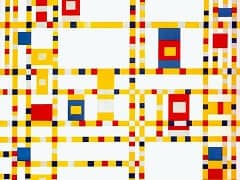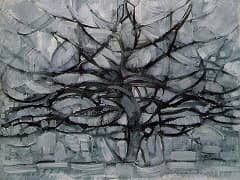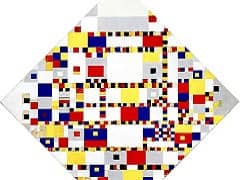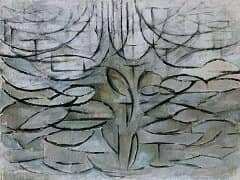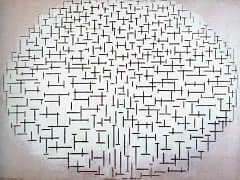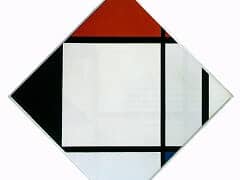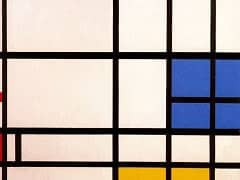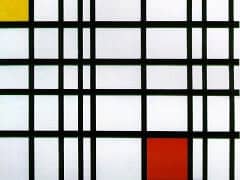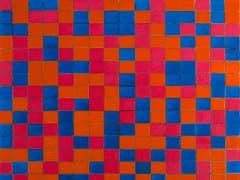Composition with Red and Black, 1936 by Piet Mondrian
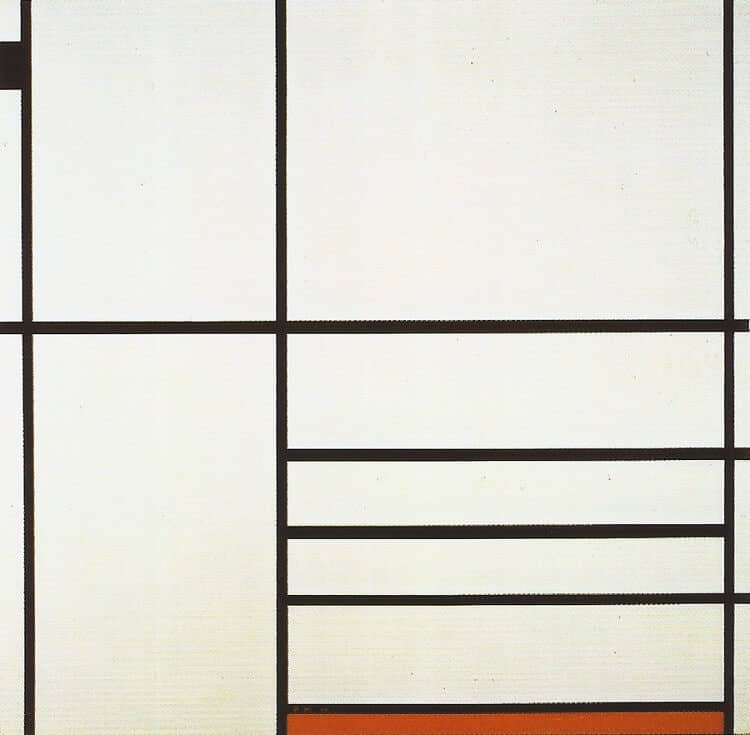
The years from 1933 to 1938, which Mondrian spent in Paris, are marked by a series of compositions in which the near element sets the tone and color is more or less reduced to an accompanying voice. The origin of these linear compositions is to be found in the series of paintings of 1930 and the following years in which the tension and nuances of the lines constitute the most important compositional elements; the consequences of these works are to be seen in the development of Mondrian's art.
In 1932 Mondrian used double lines for the first time, and t a manner suggesting that it was an experiment. This way of enriching, and complicating, the composition thereafter came to occupy an important place in his paintings, Many of the works based on this compositional principle were, however, altered by Mondrian himself, after he left Paris, in accordance with a subsequent stylistic phase. As a result, works from the years around 1935 to 1938 are relatively rare.
The Composition with Red and Black is one of the best representatives of this period, although the general structure goes back to older works. The basis of the composition is still an enclosed square, as in the compositions dated 1921 and 1922, however with this difference, that the square is still further subdivided and enlivened by three horizontal lines. Here a compositional pattern re-emerges that in essence goes back to the lozenge-shaped compositions of 1918 and 1919, in which squares are brought together into larger units or, if you will, in which larger squares are divided up into smaller units. The sparing use of color accentuates the compositional force of the lines still further.

